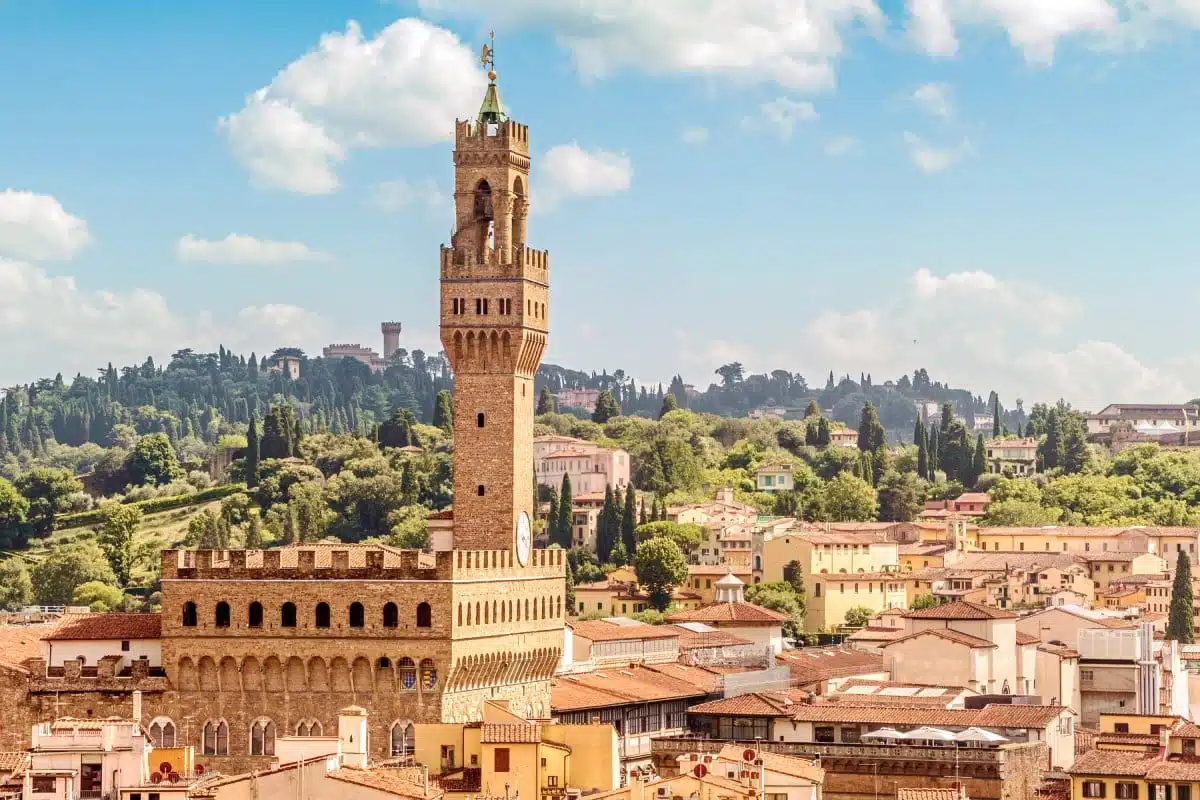Florence, the cradle of the Renaissance, offers a journey through the corridors of art history, where the works of Michelangelo, Leonardo da Vinci, and Botticelli remain as vibrant today as they were centuries ago. This guide is designed for those who seek to immerse themselves in the city’s artistic heritage, providing a comprehensive insider’s perspective on navigating Florence’s art scene. Each destination and activity is explored through an overview and an insider’s tip, ensuring a rich, informed experience.
1. Uffizi Gallery
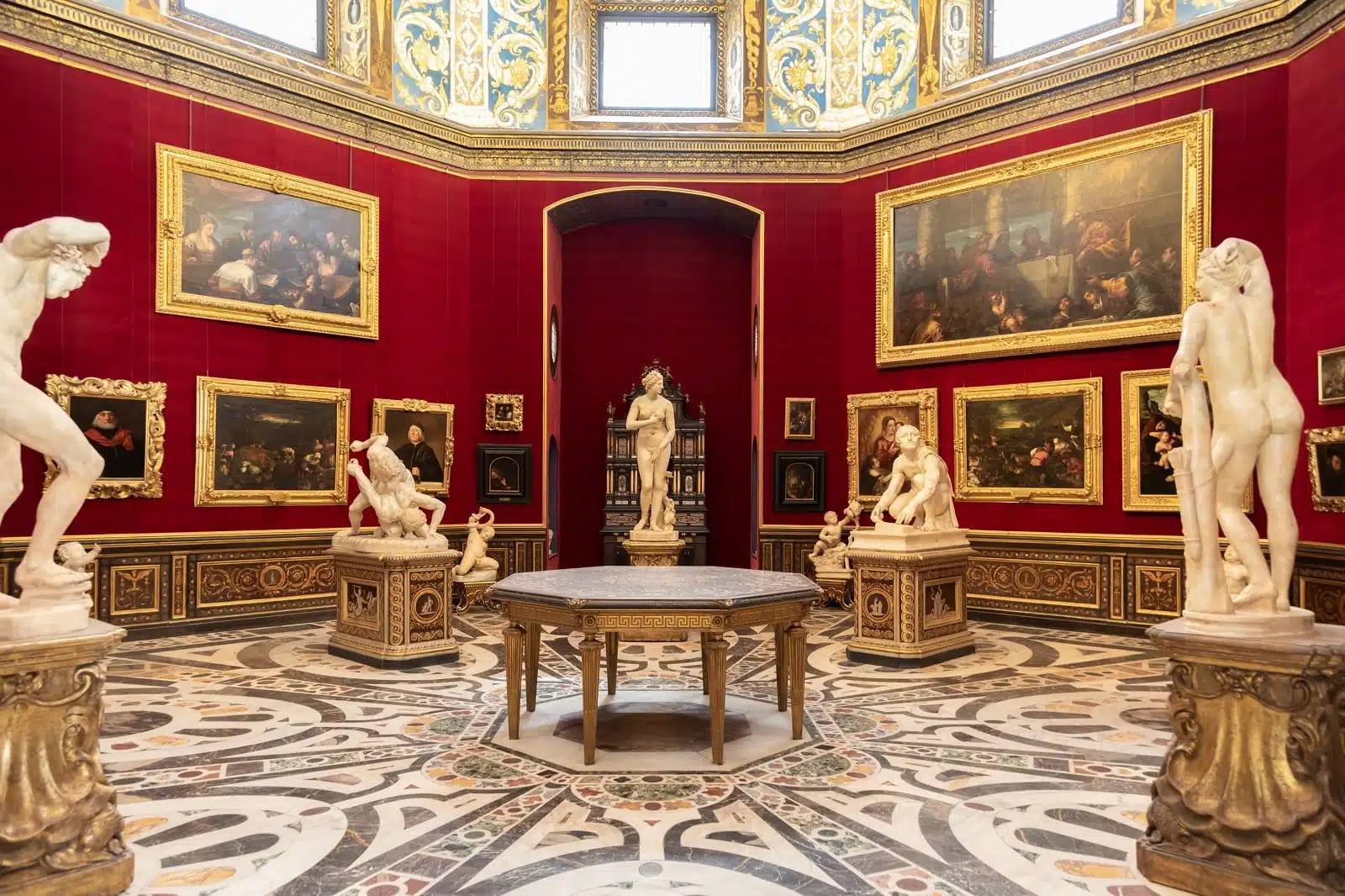
Image Credit: Shutterstock / Paolo Gallo
The Uffizi Gallery is the heart of Renaissance art, housing an extensive collection spanning centuries of history. This gallery is a journey through the evolution of art, offering insights into the minds of artists who shaped the Renaissance. With rooms dedicated to specific painters, the Uffizi allows visitors to witness the progression of artistic techniques and themes. From the ethereal beauty of Botticelli’s “The Birth of Venus” to the profound expressions in Leonardo da Vinci’s “Annunciation,” each piece tells a story of its era. The gallery’s architecture, with its long corridors and grand windows overlooking the Arno, complements the art within, creating a holistic aesthetic experience.
Insider’s Tip: To fully appreciate the depth of the Uffizi, consider booking a guided tour. These tours, often led by art historians, provide context to the artwork, uncovering the rich stories behind the masterpieces. Additionally, to avoid the long queues, purchasing tickets in advance, especially during peak tourist seasons is advisable.
When to Travel: The best times to visit the Uffizi Gallery are during the shoulder seasons of spring (April to June) and fall (September to October) to avoid the peak tourist crowds and enjoy milder weather.
How to Get There: Located in the heart of Florence, the Uffizi is easily accessible on foot from anywhere in the city center. The nearest bus stop is Ponte Vecchio, and the gallery is also a short walk from the Florence Santa Maria Novella train station.
2. Accademia Gallery
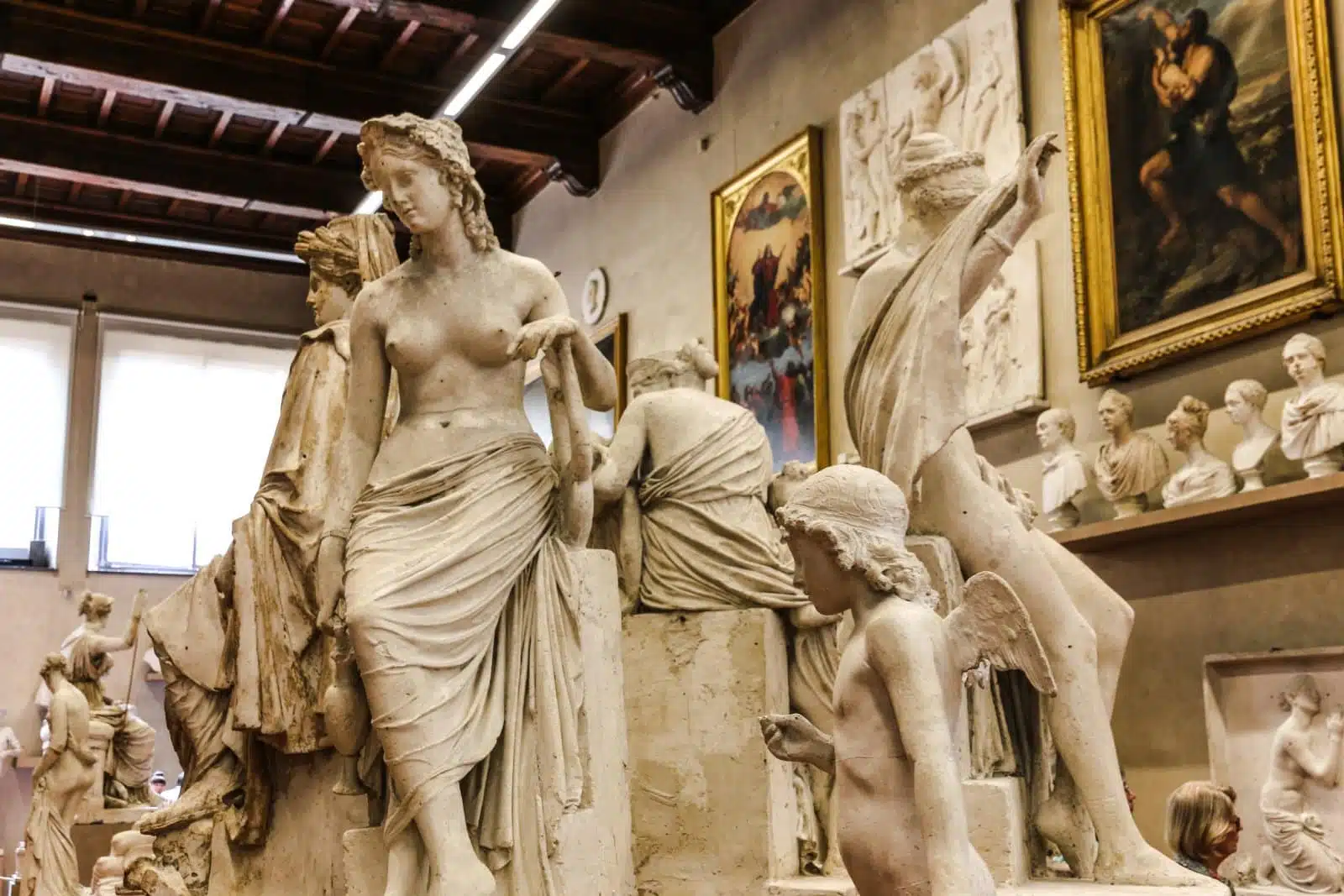
Image Credit: Shutterstock / H-AB Photography
Home to Michelangelo’s David, the Accademia Gallery offers more than just a glimpse at this iconic sculpture. The gallery presents a collection of paintings and sculptures that showcase the transition from the Middle Ages to the Renaissance. Michelangelo’s unfinished “Prisoners” or “Slaves” provide a rare insight into the artist’s creative process, revealing how he carved the figures from marble as if liberating them from the stone. The gallery also features a musical instruments section, displaying antique pieces from the Medici collection, which underscores the importance of music during the Renaissance period.
Insider’s Tip: The best time to visit the Accademia is during the early morning or late afternoon hours when the crowds are thinner. This allows for a more intimate viewing of “David” and the opportunity to see the details of Michelangelo’s craftsmanship up close.
When to Travel: Early morning or late afternoon visits during the off-peak months of April, May, September, and October offer a quieter experience.
How to Get There: The Accademia Gallery is centrally located and within walking distance from the Florence Santa Maria Novella train station. Buses to San Marco Square also serve the gallery.
3. Palazzo Pitti and Boboli Gardens
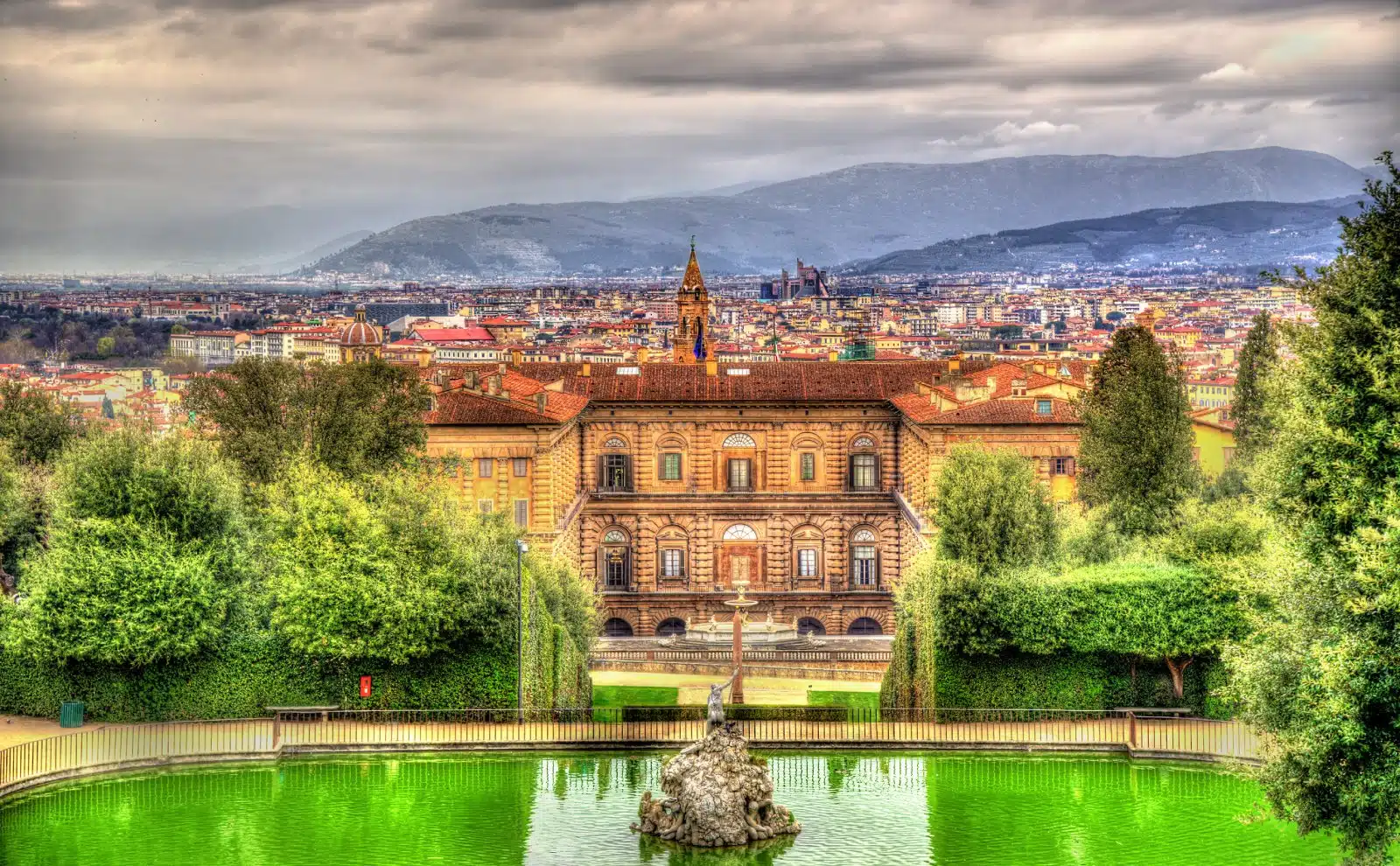
Image Credit: Shutterstock / Leonid Andronov
The Palazzo Pitti, once the residence of the Medici family, now serves as a testament to Florence’s grandeur, housing several museums, including the Palatine Gallery, with its Renaissance and Baroque paintings. The Boboli Gardens, an example of Italian Renaissance gardens, offer a splendid outdoor museum dotted with sculptures, fountains, and grottoes. The gardens showcase artistic landscaping and provide a serene escape from the city, offering panoramic views of Florence and the surrounding Tuscan hills.
Insider’s Tip: Dedicate at least half a day to thoroughly explore both the Palazzo and the Gardens. The beauty of the Boboli Gardens is best enjoyed leisurely, and the Palazzo’s museums contain too many treasures to be rushed.
When to Travel: Visit in the late spring (May to June) or early fall (September) to enjoy the gardens in bloom and cooler temperatures.
How to Get There: Palazzo Pitti is accessible by foot from the Ponte Vecchio. The nearest bus stops include Pitti and Frescobaldi.
4. Santa Maria Del Fiore
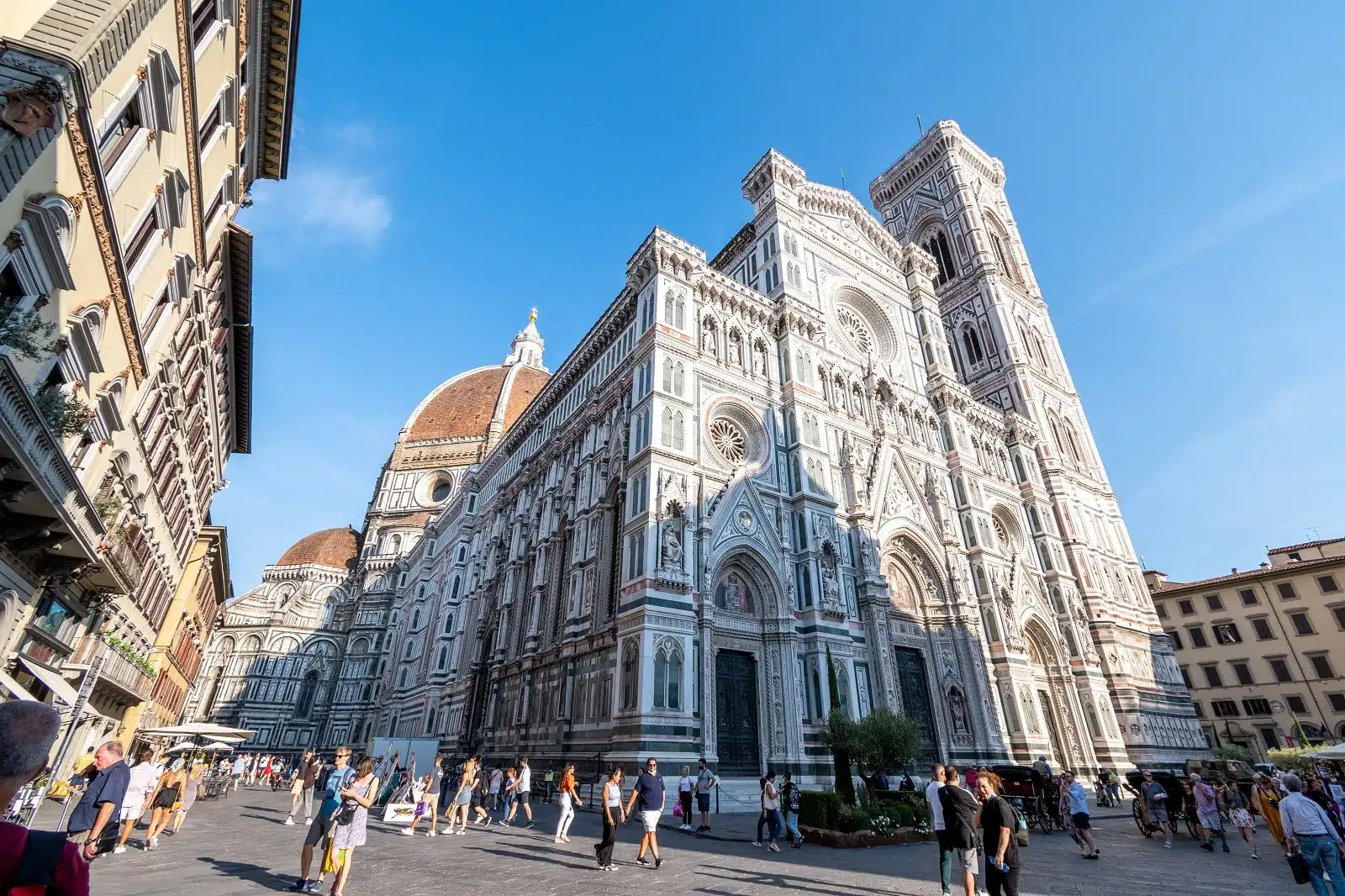
Image Credit: Shutterstock / Alexander_Peterson
The Duomo, with its magnificent dome engineered by Filippo Brunelleschi, is a marvel of architectural innovation. The cathedral’s facade, adorned with marble in shades of pink, white, and green, symbolizes Florence’s artistic and cultural prominence. The vast space is accentuated by the intricate frescoes that line the dome, depicting “The Last Judgment.” Climbing to the top of the dome offers a breathtaking view of the city and a closer look at the engineering genius behind this masterpiece.
Insider’s Tip: For those wishing to climb the dome, booking a timed entry ticket in advance is crucial to avoid long waits. Additionally, visiting the adjacent Baptistery and Giotto’s Campanile will provide a fuller understanding of the complex’s religious and artistic significance.
When to Travel: The best time to visit is during the off-peak months of April to June and September to October to avoid crowds and enjoy moderate weather.
How to Get There: The Duomo is in the center of Florence, within walking distance from the Santa Maria Novella train station. It’s also accessible by multiple bus lines stopping nearby.
5. Basilica of San Lorenzo
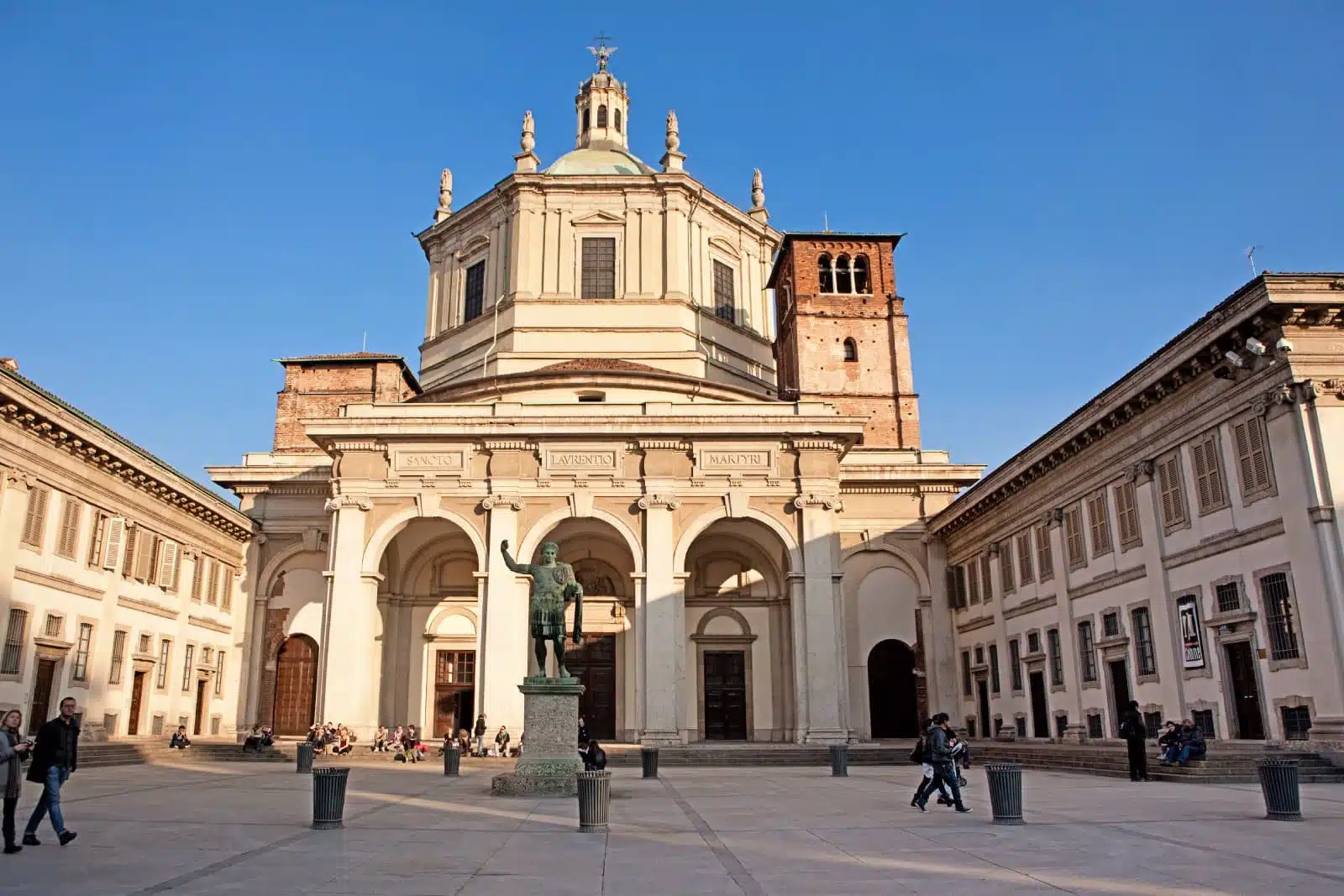
Image Credit: Shutterstock / Birute Vijeikiene
The Basilica of San Lorenzo is one of Florence’s oldest churches, representing a blend of Renaissance and early Christian architecture. The church houses the Medici Chapels, where members of the Medici family are entombed. The New Sacristy, designed by Michelangelo, showcases the artist’s architectural prowess and his sculptures, including the allegorical figures of “Dawn,” “Dusk,” “Day,” and “Night.” With its innovative staircase, the Laurentian Library is a masterpiece of Mannerist architecture and holds thousands of historic manuscripts and books.
Insider’s Tip: Tourists often overlook the Medici Chapels and Laurentian Library, making them less crowded and allowing for a more contemplative visit. Paying attention to the details in Michelangelo’s sculptures and the architectural elements he designed can be a profoundly moving experience.
When to Travel: For fewer tourists and pleasant weather, ideal times are spring and fall, particularly in May and October.
How to Get There: Located near the Medici Chapels, it’s a short walk from the Florence Santa Maria Novella train station. Buses running through the city center also stop close to the basilica.
6. The Bargello National Museum
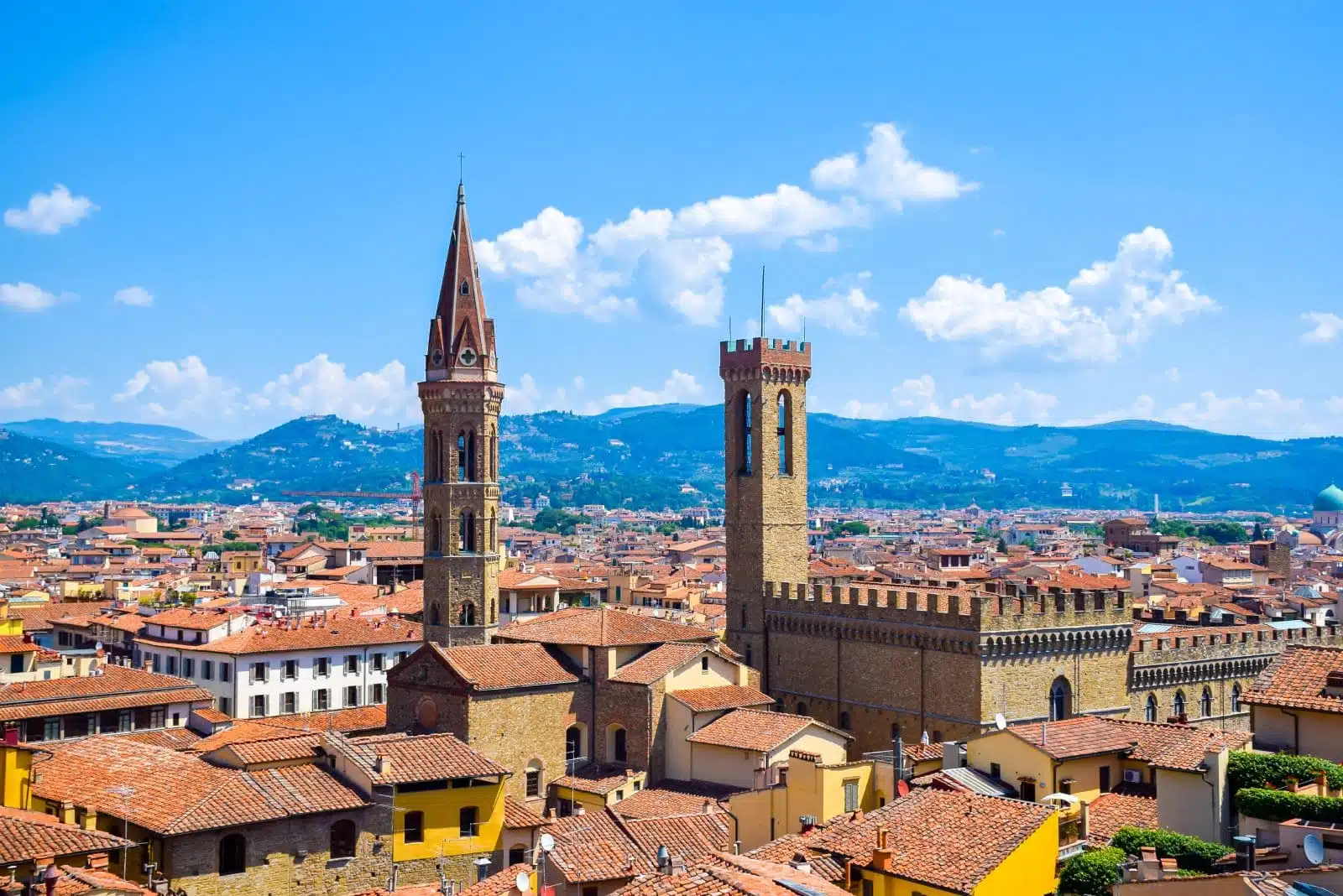
Image Credit: Shutterstock / Zoegraphy
The Bargello National Museum, once a prison and a barracks, now serves as a treasure trove of Renaissance sculpture, showcasing works by Michelangelo, Donatello, and Giambologna, among others. Its collection includes Donatello’s “David,” the first nude statue of the Renaissance, and Michelangelo’s “Bacchus,” displaying the youthful exuberance and skill of the artist. The museum’s structure, with its medieval architecture and courtyards, adds to the historical ambiance, allowing visitors to step back in time and appreciate the evolution of sculpture from the Gothic period through the Renaissance.
Insider’s Tip: Take your time to explore the less crowded upper floors, where you can find a collection of decorative arts, including ceramics, and textiles. These pieces provide a broader context for the Renaissance’s artistic achievements beyond sculpture and painting.
When to Travel: Visit during the shoulder seasons (April-June, September-October) for a more intimate experience.
How to Get There: The museum is centrally located and easily reached on foot from Florence’s main attractions. The closest bus stops are Verdi and Ghibellina.
7. Church of Santa Croce
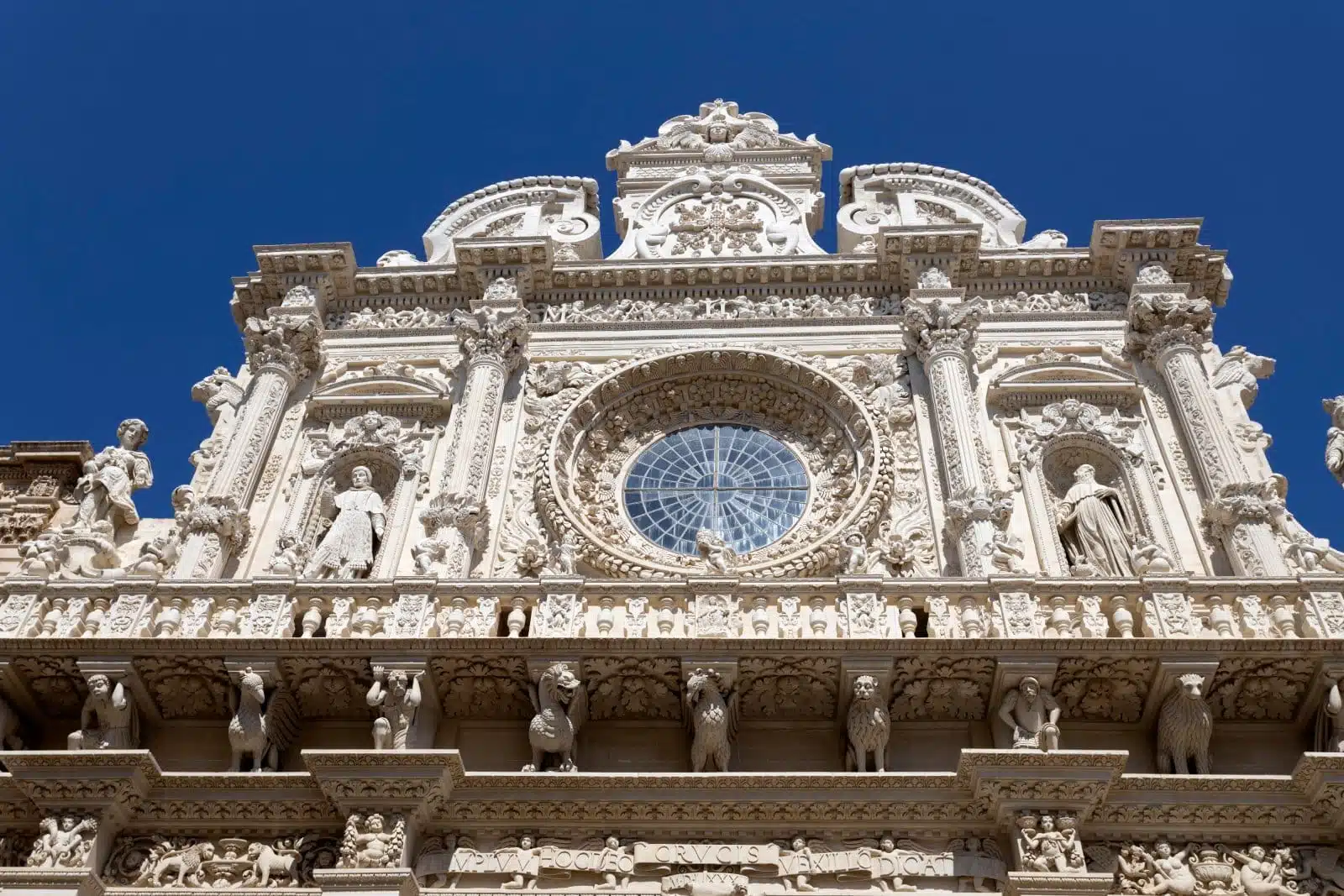
Image Credit: Shutterstock / faber1893
The Church of Santa Croce is a place of worship and a monumental mausoleum for some of Italy’s most illustrious figures, such as Michelangelo, Galileo, and Machiavelli. Its chapels are adorned with frescoes by Giotto and his pupils, depicting scenes from the life of St. Francis and offering an early example of humanist art. The Pazzi Chapel, designed by Brunelleschi, is a masterpiece of Renaissance architecture, demonstrating harmony and proportion. The church’s facade, completed in the 19th century, belies the wealth of history and art contained within.
Insider’s Tip: Attend a guided tour to gain insights into the church’s art and history that are not immediately apparent, including hidden details in the frescoes and stories behind the tombs of the great men buried here.
When to Travel: The best visiting times are during the spring and fall months to avoid the summer crowds.
How to Get There: Situated in the Santa Croce district, it’s easily accessible on foot from the city center. Buses to Santa Croce are available.
8. Palazzo Vecchio
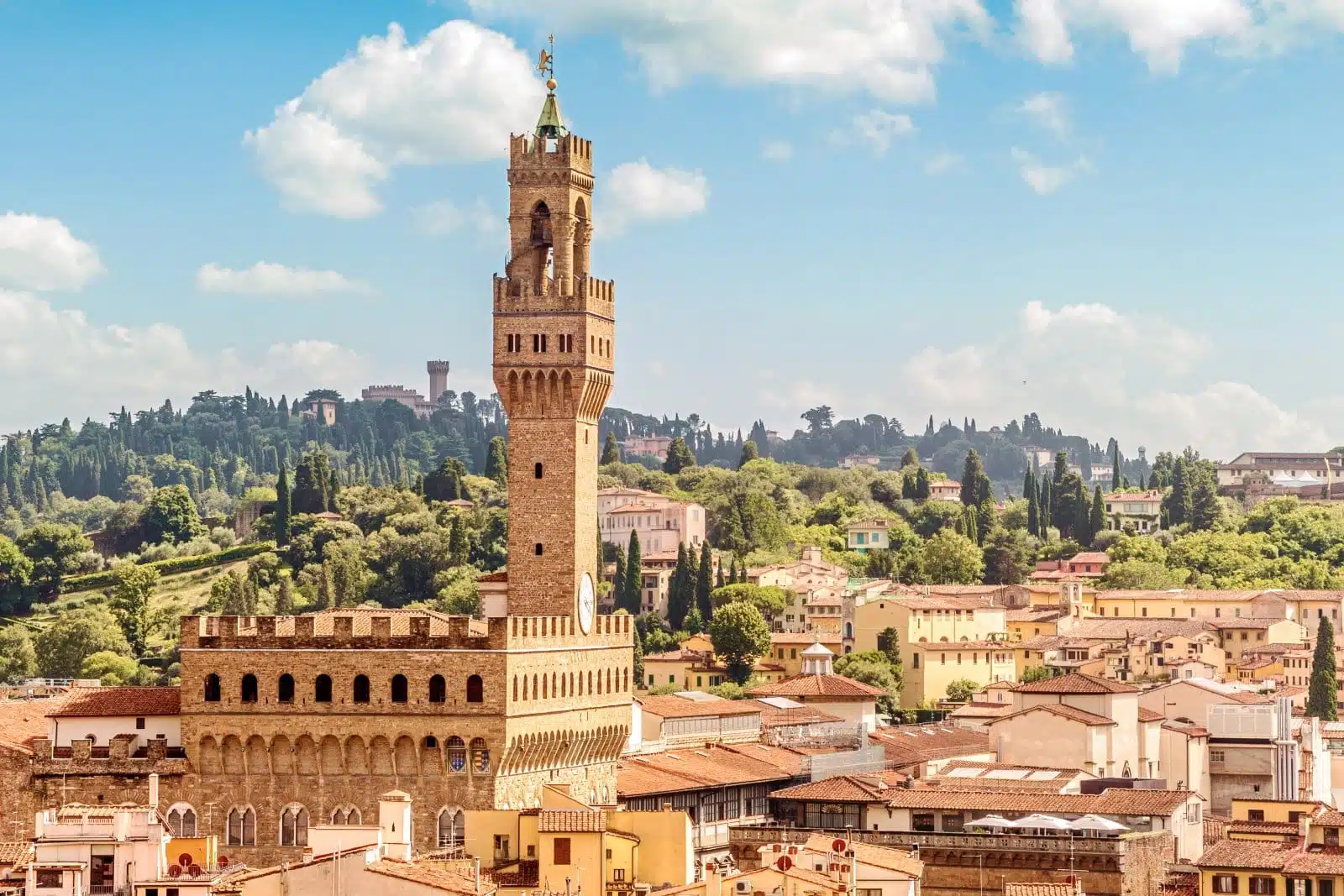
Image Credit: Shutterstock / QQ7
With its imposing structure and towering battlements, Palazzo Vecchio has been the symbol of Florence’s political power for centuries. Today, it serves as both the city hall and a museum. Visitors can explore elaborately decorated rooms, including the Salone dei Cinquecento, adorned with massive murals by Vasari, and smaller chambers filled with artworks by Michelangelo and Donatello. The palace also offers a glimpse into the life of the Medici family, with personal artifacts and luxurious furnishings on display.
Insider’s Tip: Climb the Arnolfo Tower for a panoramic view of Florence. The climb is steep, but the vista from the top is unparalleled, offering a unique perspective on the city’s layout and the surrounding countryside.
When to Travel: Opt for visits in spring and fall off-peak seasons for a more comfortable experience.
How to Get There: Located in Piazza della Signoria, Palazzo Vecchio is within walking distance from anywhere in central Florence. The nearest bus stop is Condotta.
9. Medici Chapels
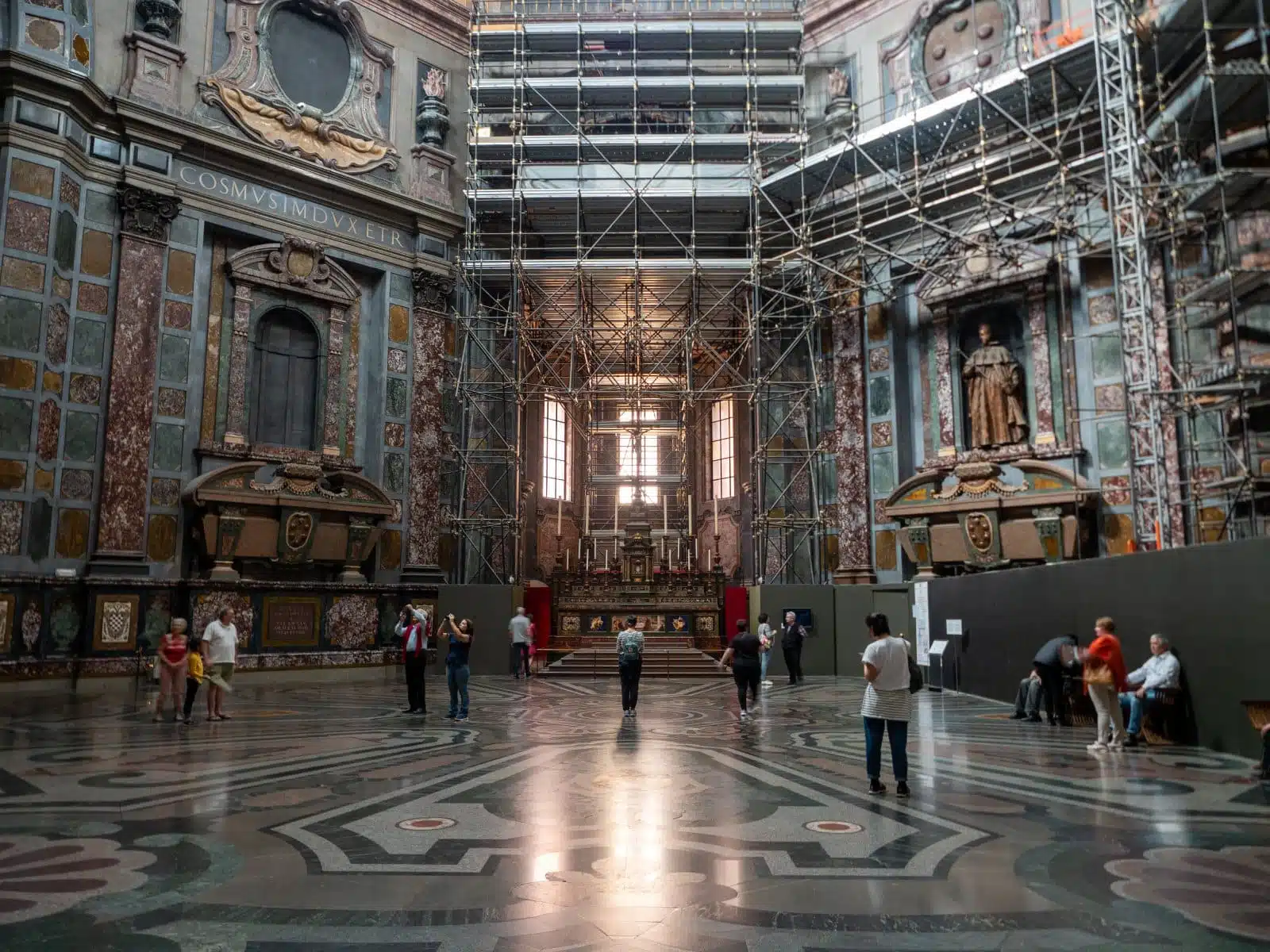
Image Credit: Shutterstock / silverfox999
The Medici Chapels, part of the Basilica of San Lorenzo complex, serve as a grandiose mausoleum for the Medici family, showcasing the wealth and power of Florence’s ruling dynasty. The New Sacristy, designed by Michelangelo, is a highlight, with its architectural elegance and the symbolic sculptures of Day, Night, Dawn, and Dusk. The Chapel of the Princes, adorned with semi-precious stones and a dome rivaling that of the Duomo, epitomizes the opulence of the Medici’s patronage of the arts.
Insider’s Tip: Pay attention to the intricate details of the Chapel of the Princes, including pietra dura, a decorative technique using inlaid semi-precious stones, which is a testament to the Medici’s love for art and luxury.
When to Travel: Spring (April to June) and fall (September to October) are the best times to visit, offering mild weather and fewer tourists.
How to Get There: The chapels are next to the Basilica of San Lorenzo and a short walk from the Florence Santa Maria Novella train station, with several bus lines also serving the area.
10. San Miniato Al Monte
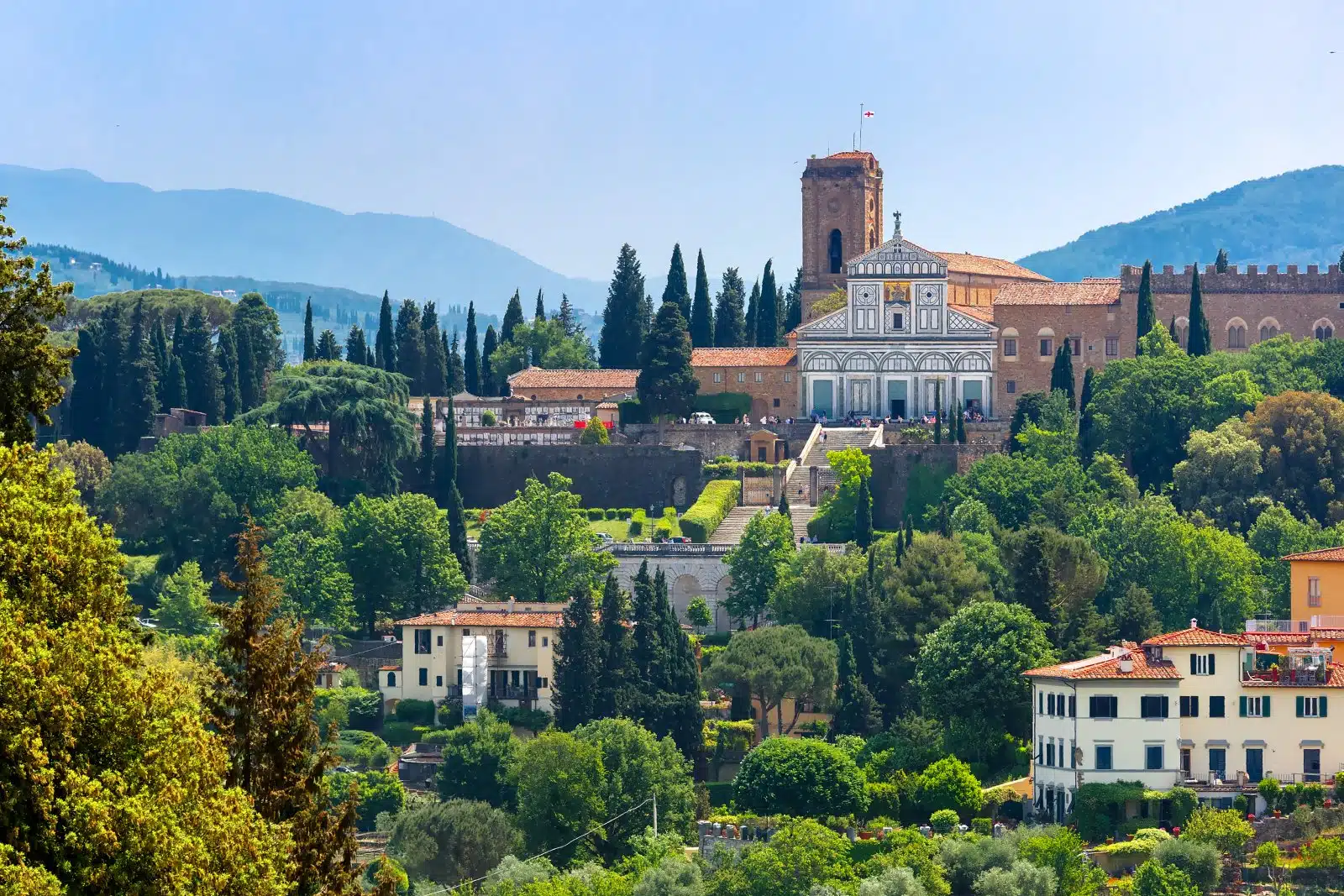
Image Credit: Shutterstock / kavalenkava
Perched atop one of Florence’s highest points, San Miniato al Monte offers a serene retreat from the bustling city. This Romanesque church, dating back to the 11th century, is renowned for its geometrically patterned marble facade and the stunning mosaic of Christ between the Virgin and St. Minias. The church’s atmosphere is tranquil, with its frescoed crypt and the Chapel of the Cardinal of Portugal, a masterpiece of Renaissance sculpture and inlay work. The adjoining cemetery, with its panoramic views of Florence, provides a reflective space to contemplate the city’s history and beauty.
Insider’s Tip: Time your visit to coincide with the Gregorian chants of the monks, usually held in the late afternoon. The chants, echoing through the ancient walls of San Miniato, offer an ethereal experience that connects the visitor to Florence’s spiritual and artistic traditions.
When to Travel: Late spring and early fall are ideal for visiting, providing clear views of Florence and comfortable temperatures for the ascent.
How to Get There: The church is located atop one of Florence’s hills, accessible by foot for those who enjoy a hike, or by taking bus 12 or 13 from the city center.
The Bottom Line
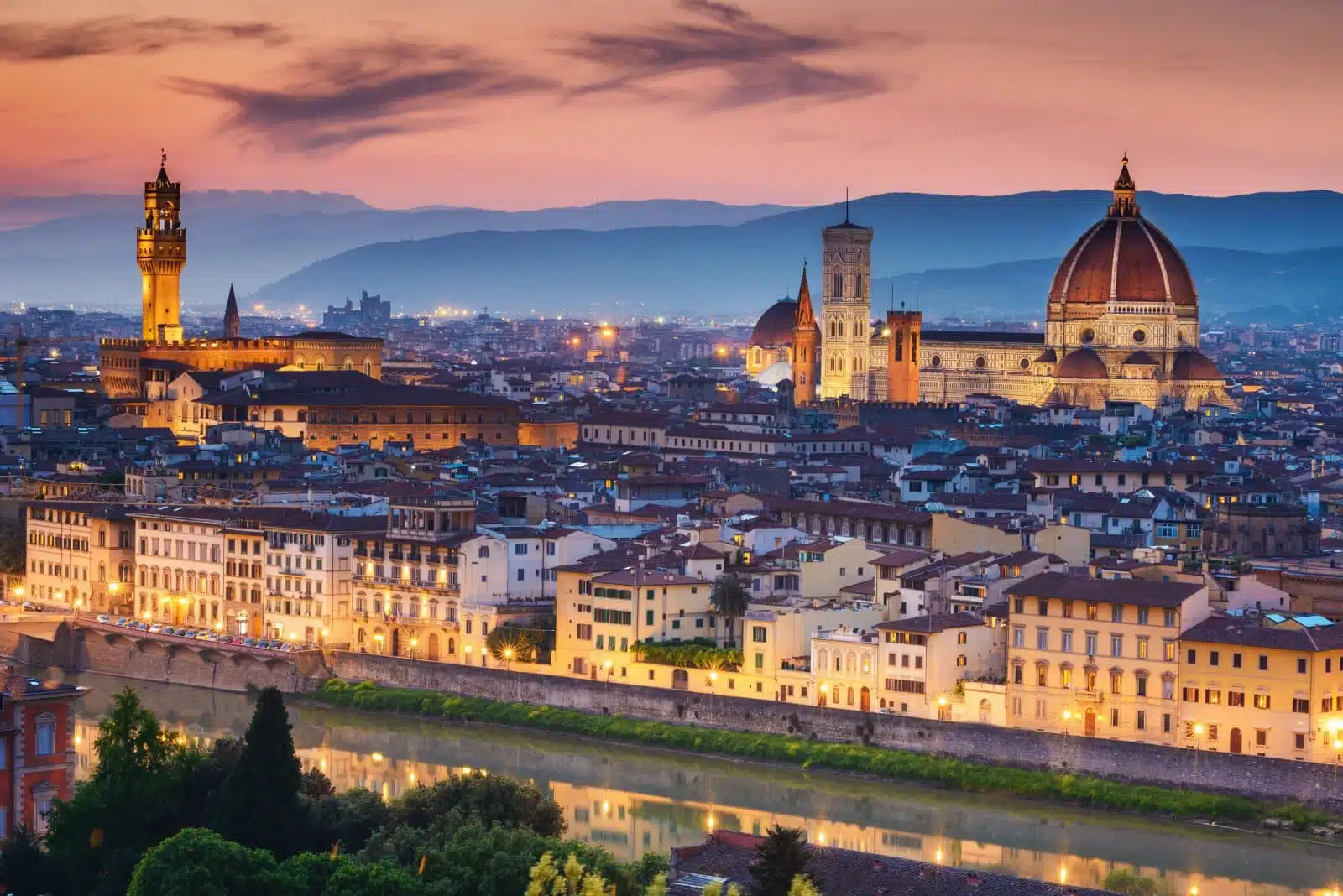
Image Credit: Shutterstock / gillmar
Florence is a city where every street, every square, and every building tells a story of artistic and intellectual pursuit. It is a pilgrimage site for art lovers, offering a deep dive into the Renaissance, where beauty, innovation, and humanism converge. Whether standing before the grandeur of the Duomo, wandering through the Uffizi, or contemplating the serene beauty of San Miniato al Monte, Florence offers an endless journey of discovery.
More From The Green Voyage
Top 10 Trending Travel Destinations 2024
6 Essential Banking Apps for International Travel – Managing Your Finances on the Go
Traveling With Kids – 10 Tips to Create Memorable Family Holidays
The post The Art Lover’s Guide to Florence – A Renaissance Experience first appeared on The Green Voyage.
Featured Image Credit: Shutterstock / QQ7.
For transparency, this content was partly developed with AI assistance and carefully curated by an experienced editor to be informative and ensure accuracy.
Tips for Trip Success
Book Your Flight
Find an inexpensive flight by using Kayak, a favorite of ours because it regularly returns less expensive flight options from a variety of airlines.
Book Your Hotel or Special Accommodation
We are big fans of Booking.com. We like their review system and photos. If we want to see more reviews and additional booking options, we go to Expedia.
You Need Travel Insurance!
Good travel insurance means having total peace of mind. Travel insurance protects you when your medical insurance often will not and better than what you get from your credit card. It will provide comprehensive coverage should you need medical treatment or return to the United States, compensation for trip interruption, baggage loss, and other situations.Find the Perfect Insurance Plan for Your Trip
